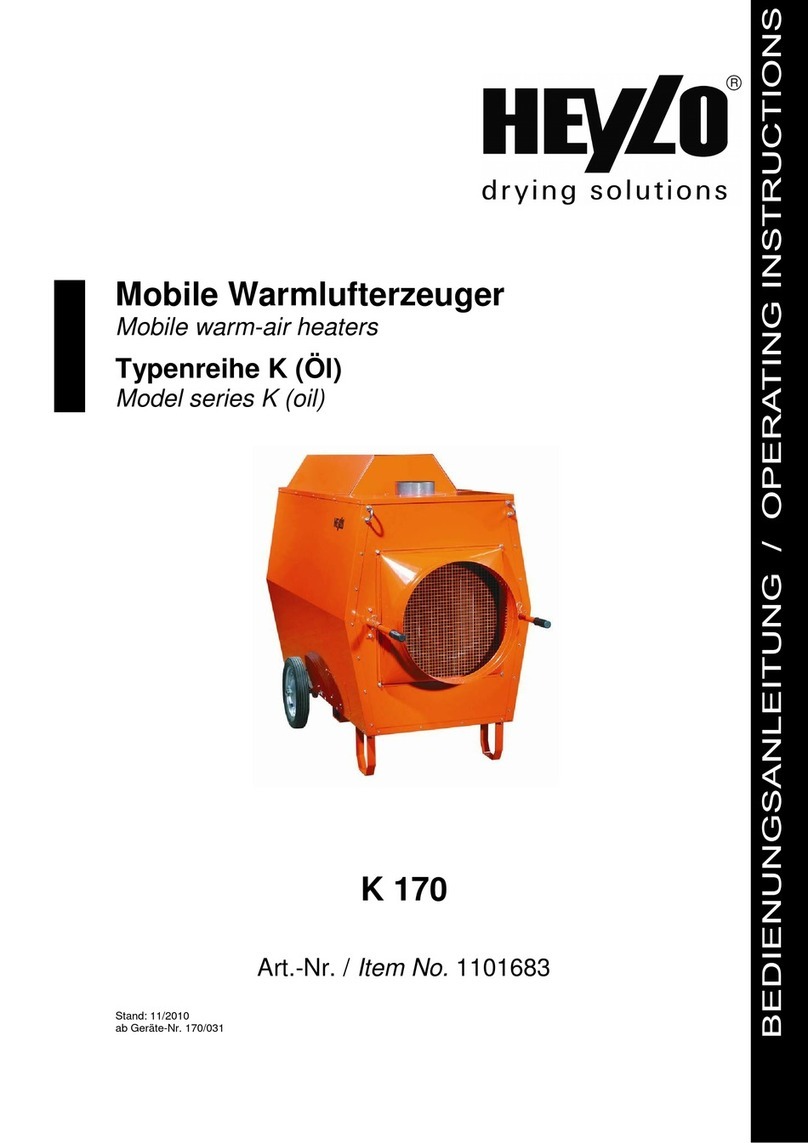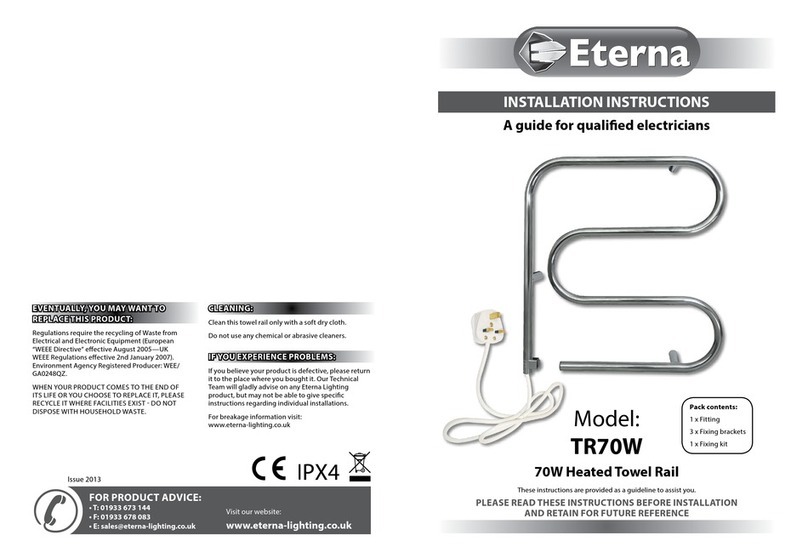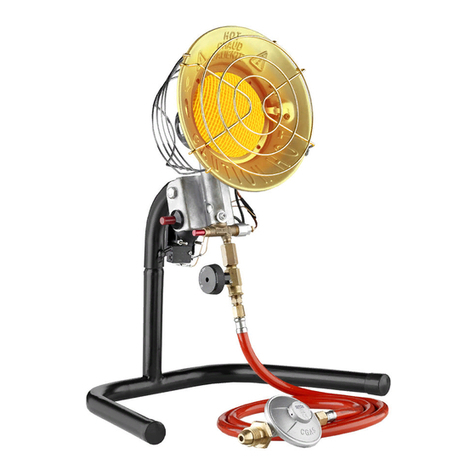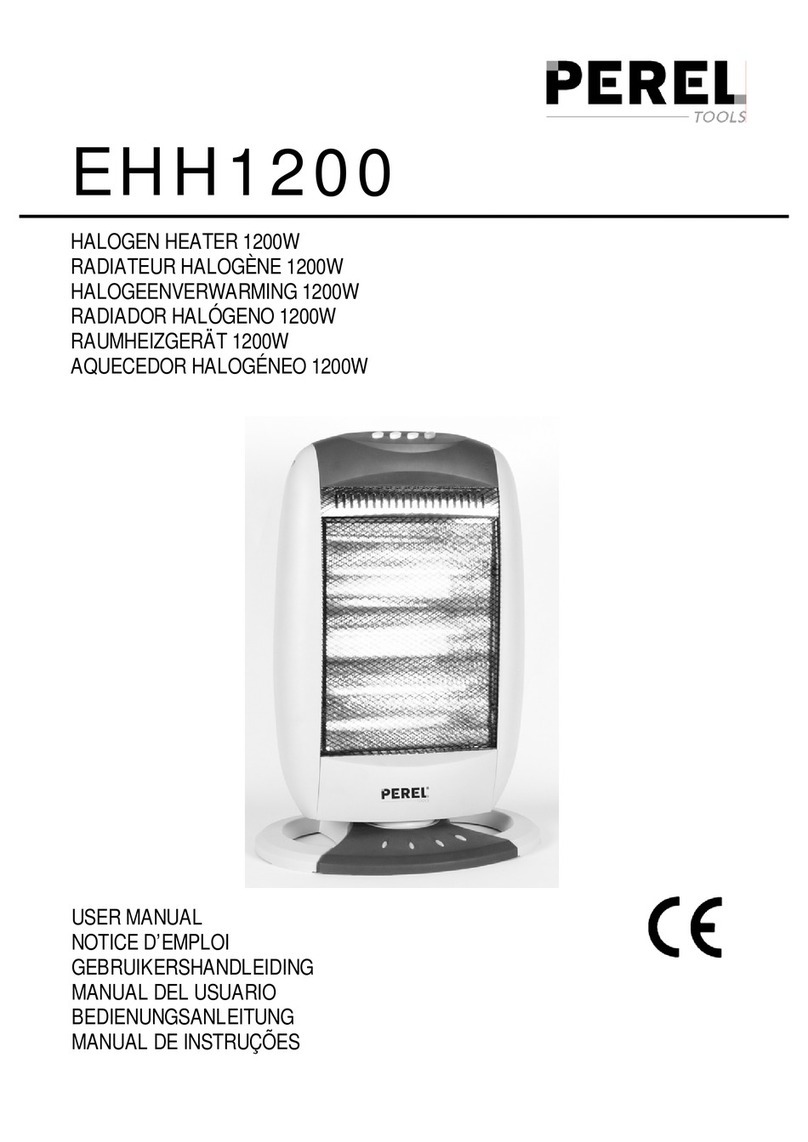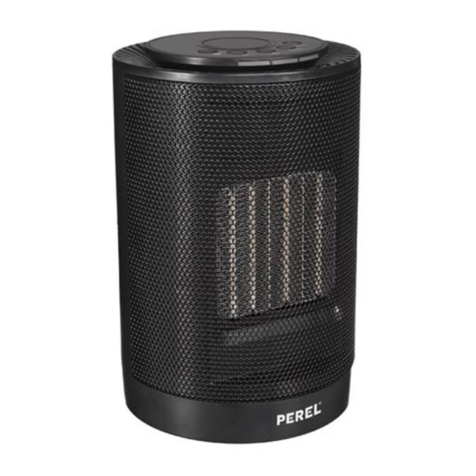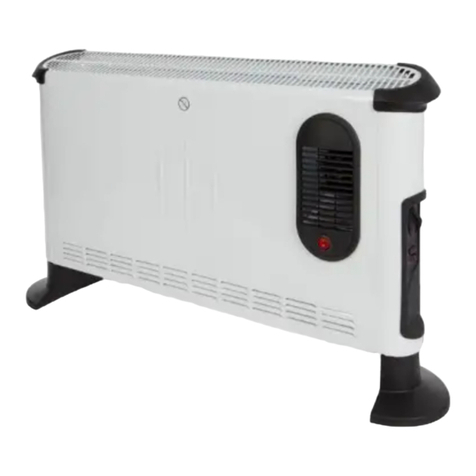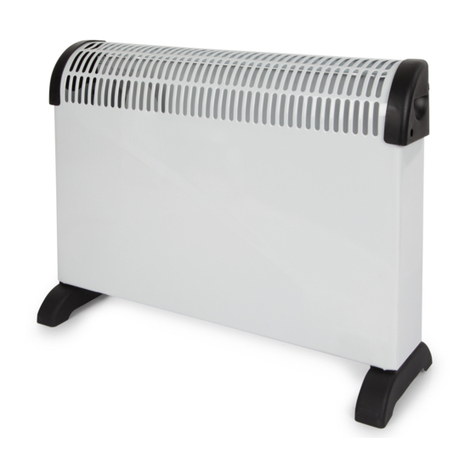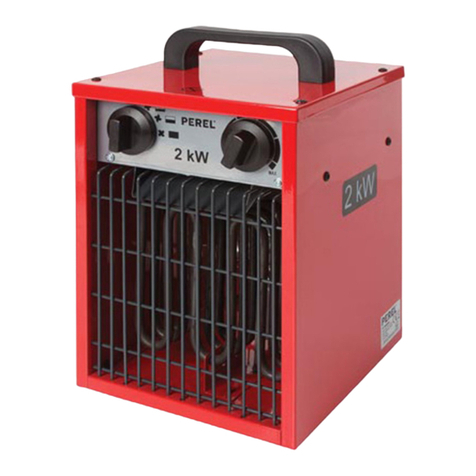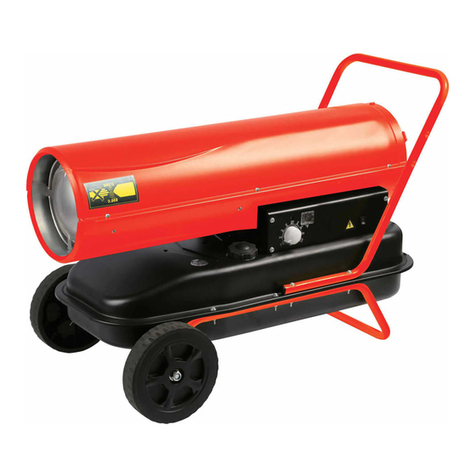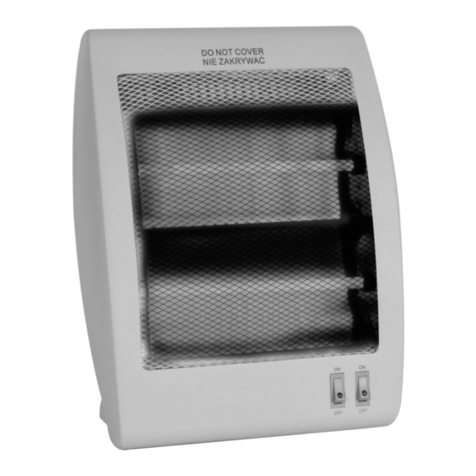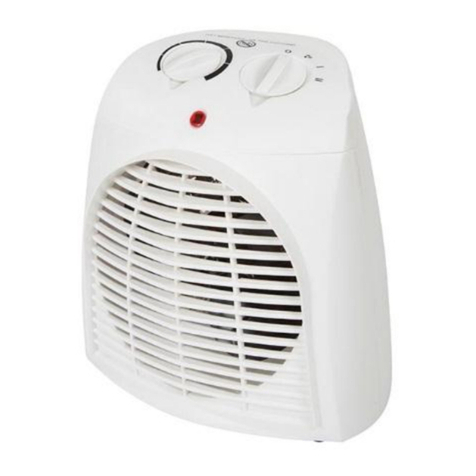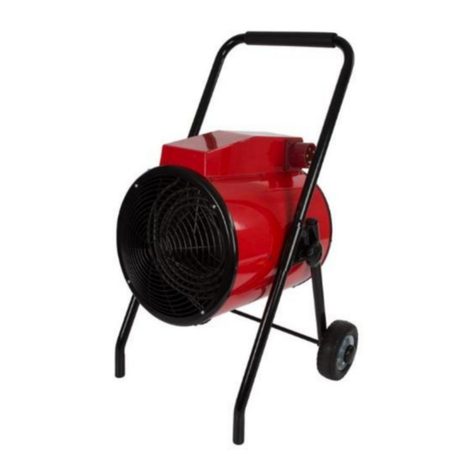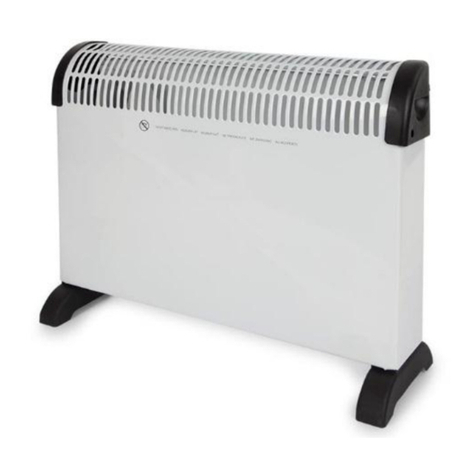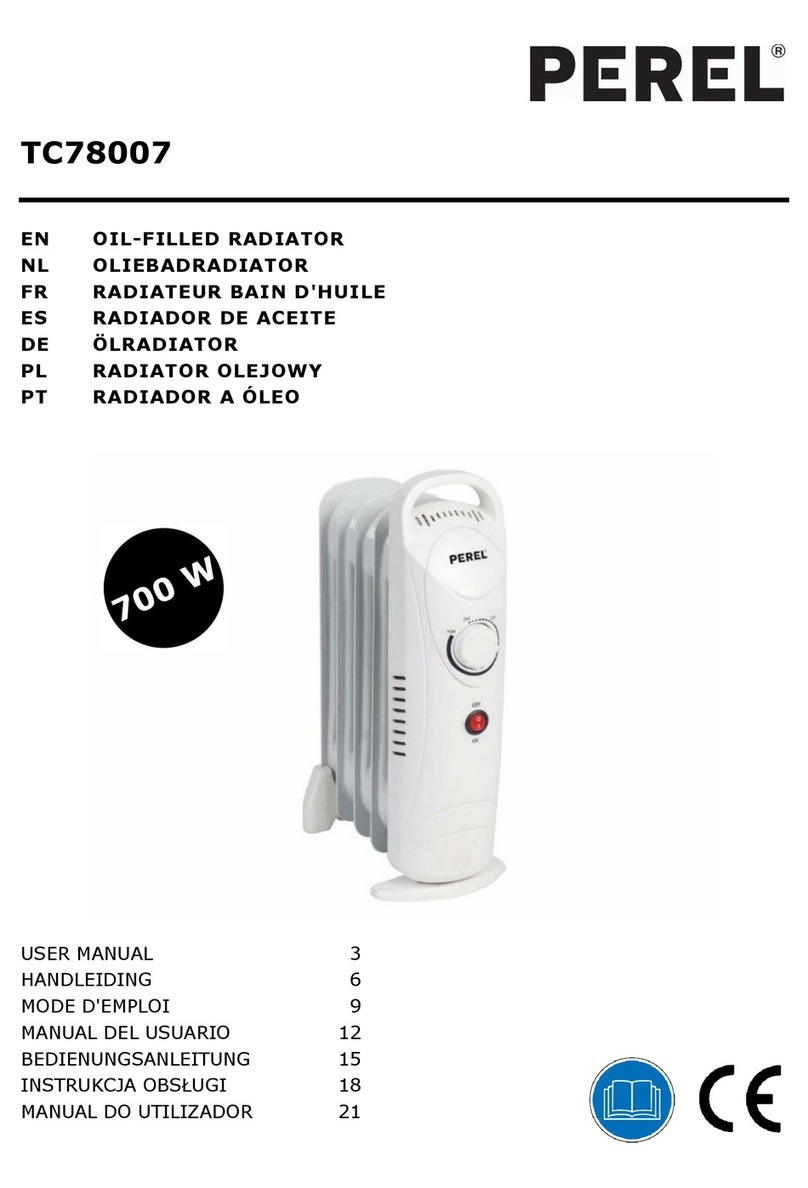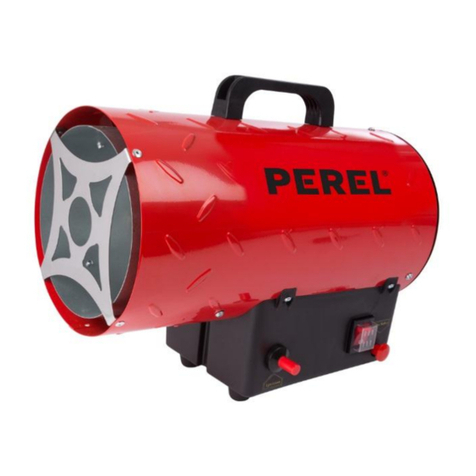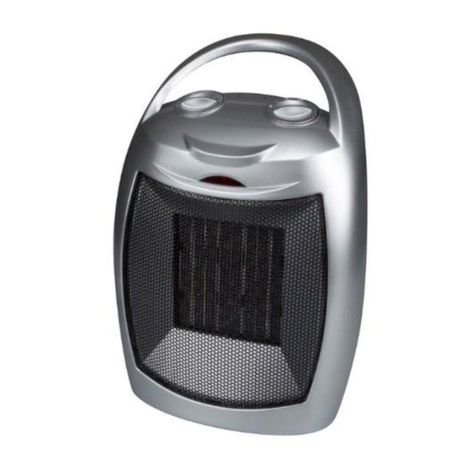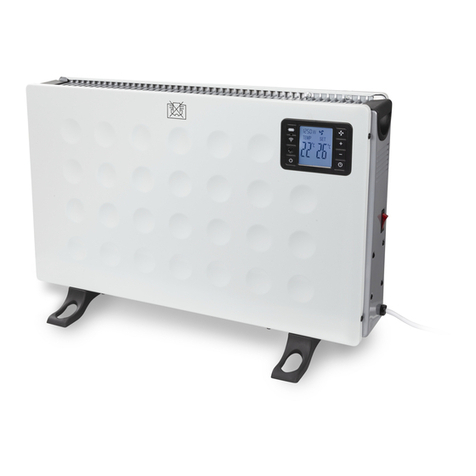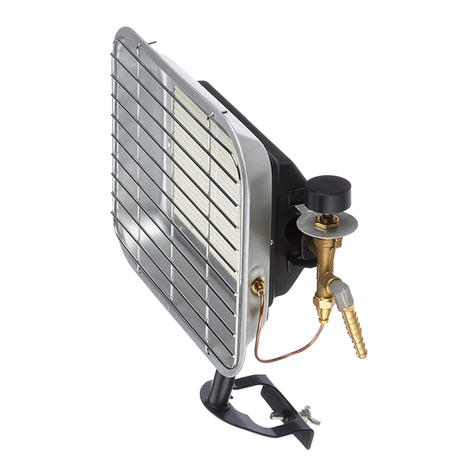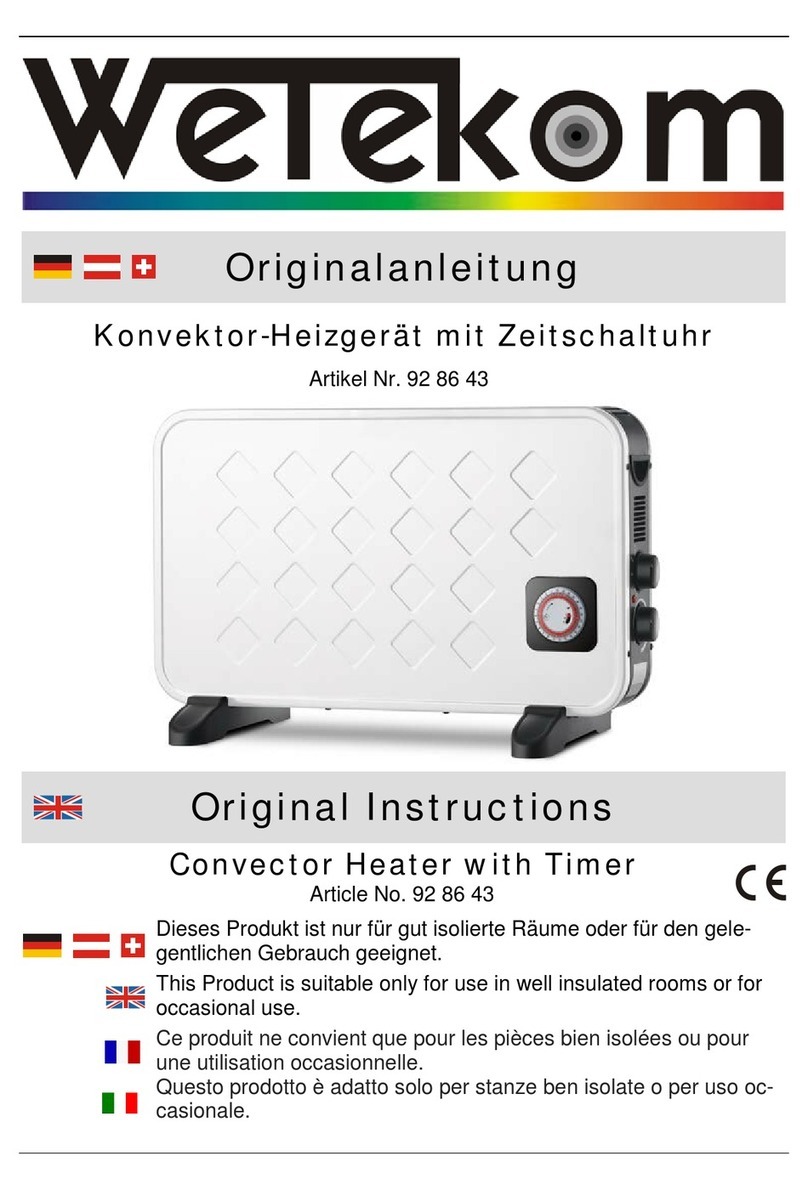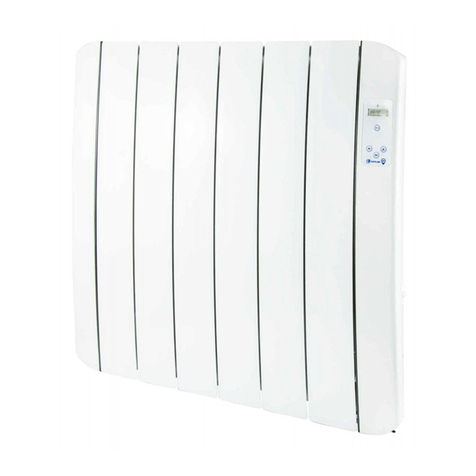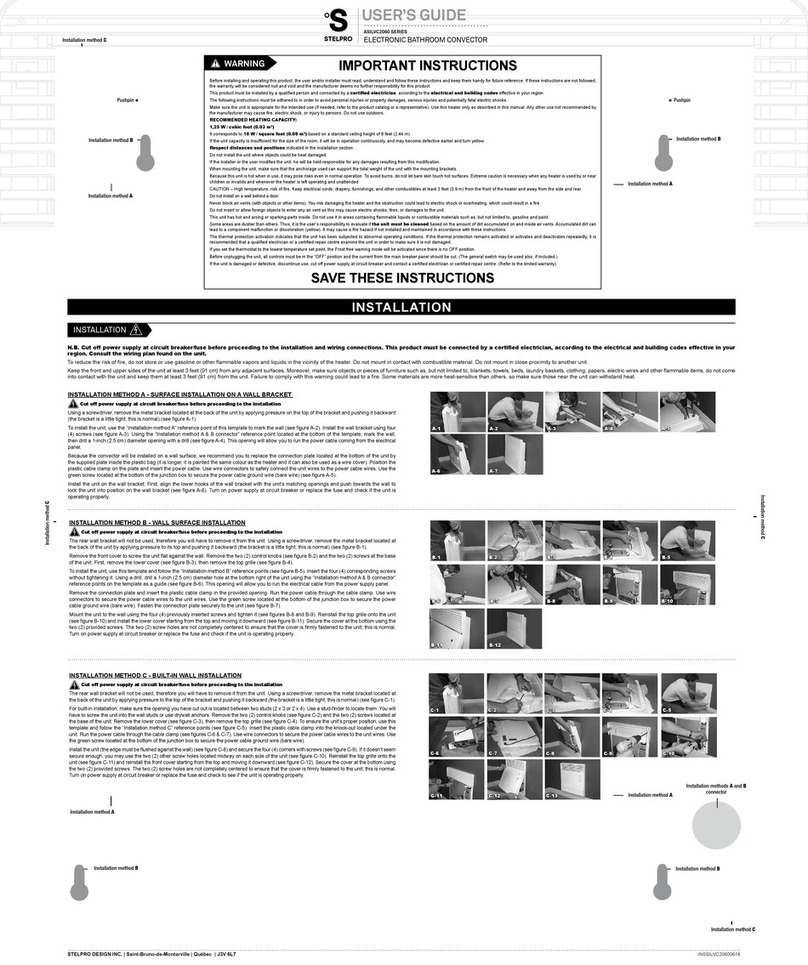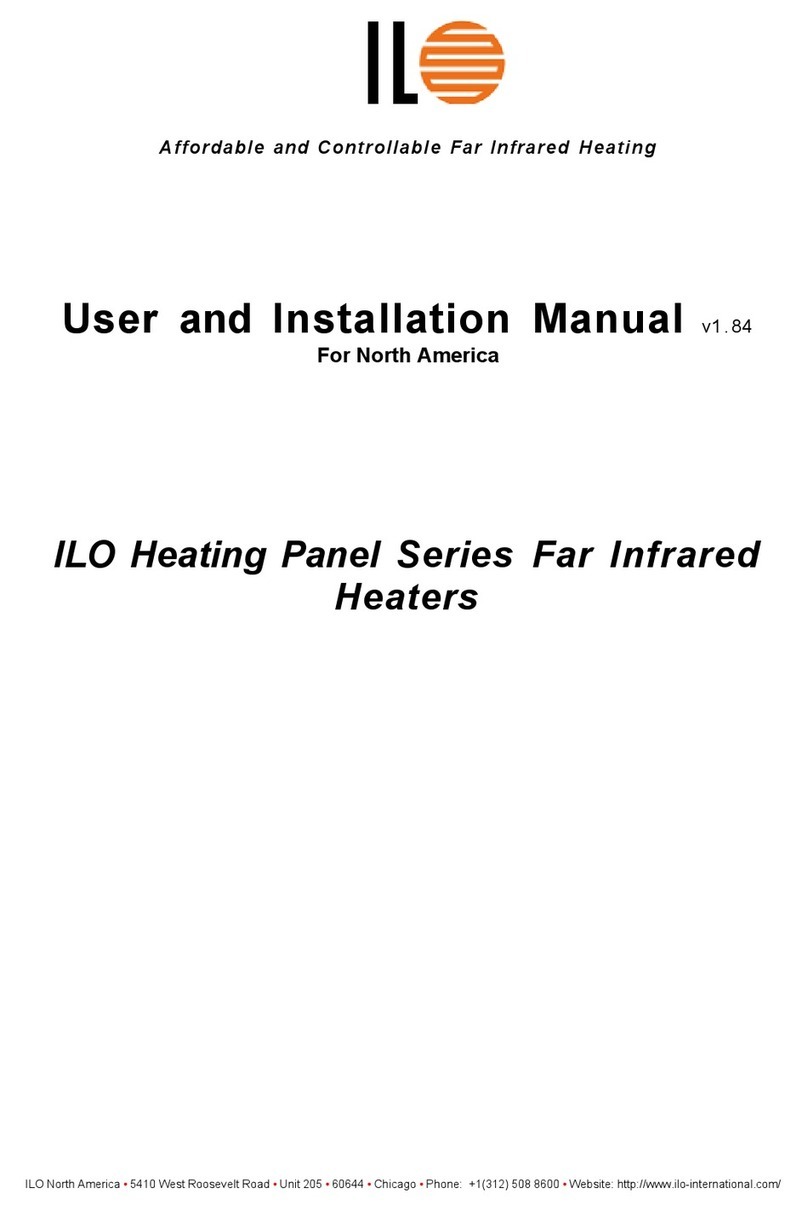
FT10C/FT15C/FT30C
V. 06 –01/03/2019 5 ©Velleman nv
Do not hamper, completely or partially, the air intake at the back and/or the air output at the front. Avoid
using any type of air canalization toward or from the device.
The minimum safety distance is 2 m from walls or any other object.
The mobile heater may only be used on a fireproof surface.
Connect the mobile heater on a levelled, stable and fireproof surface to avoid fire risks.
The mobile heater may not be used in rooms where explosive dusts, gases, liquids or any other flammable
materials are present (fabrics, wood, paper, petrol, etc.).
It is recommended to use a fireproof protection if the mobile heater is being used near steps, curtains or
other covering materials. A minimum safety distance of 2.5 m between the hot parts of the device and any
flammable material (fabrics, wood, paper, petrol, etc.) or from thermolabile materials (included the power
cable) must be observed.
Maintenance and internal cleaning activities may only be commended to a specialised technician appointed
by the manufacturer.
The heater must be disconnected from the mains and from any gas-feeding device if the heater is to be left
unattended and if the safety instructions cannot be observed.
If the heater does not switch on or if it switches on in an abnormal way, disconnect the heater from the
mains and from any gas-feeding device. Check the airflow to the heater and make sure it is sufficient
before trying to switch on the heater.
Never move, manipulate or clean a switched-on heater.
Only replace the gas hose with a similar hose or with a hose which is able to cope with the used gas
pressure. Refer to the local regulations. The used gas hose must be 1.5 m long. Do not crimp or bend the
gas hose.
Do not use a gas hose to canalize hot air.
Disconnect the heater from the mains, cut the gas supply, disconnect the gas hose and close the gas intake
inside the heater if it will not be used for a longer period.
It is recommended to leave the annual maintenance of the heater to a specialized technician.
Do not use this equipment in basements or premises below ground level.
This device should only be used together with the hose and regulator provided. If the hose or regulator is
damaged, it must be replaced by the original spare part (order code: FT11), which can be ordered from the
manufacturer or service agent.
NOT TO BE USED FOR THE HEATING OF HABITABLE AREAS OF DOMESTIC PREMISES; FOR USE IN PUBLIC
BUILDINGS, REFER TO NATIONAL REGULATIONS.
3. Warning
Do not use in unventilated areas. Lack of proper ventilation will lead to improper combustion. Improper
combustion can lead to carbon monoxide poisoning and serious injury or death. Symptoms of carbon
monoxide poisoning can include headache, dizziness and difficulty in breathing.
Never obstruct the front and back of the heater.
GAS ODOUR. Gas has odorants added specifically for gas leak detection. If a gas leak occurs, you
should be able to smell gas. Since LP gases are heavier than air, you should smell for the gas odour
low to the floor. Any gas odour is your signal to go into immediate action.
Do not take any action that could ignite the fuel gas. Do not operate any electrical switches. Do not pull any
power supply or extension cords. Do not light matches or any other source of flame. Do not use your
telephone.
Get everyone out of the building and away from the area immediately.
Close all gas tank or cylinder supply valves, or the main supply valve located at the meter if you use natural
gas.
Leave the area or building and call your gas supplier and the fire department. Stay out of the area or the
building until it is declared safe by the gas supplier and the fire department.
Let the gas supplier and the fire department check for the gas leak.








